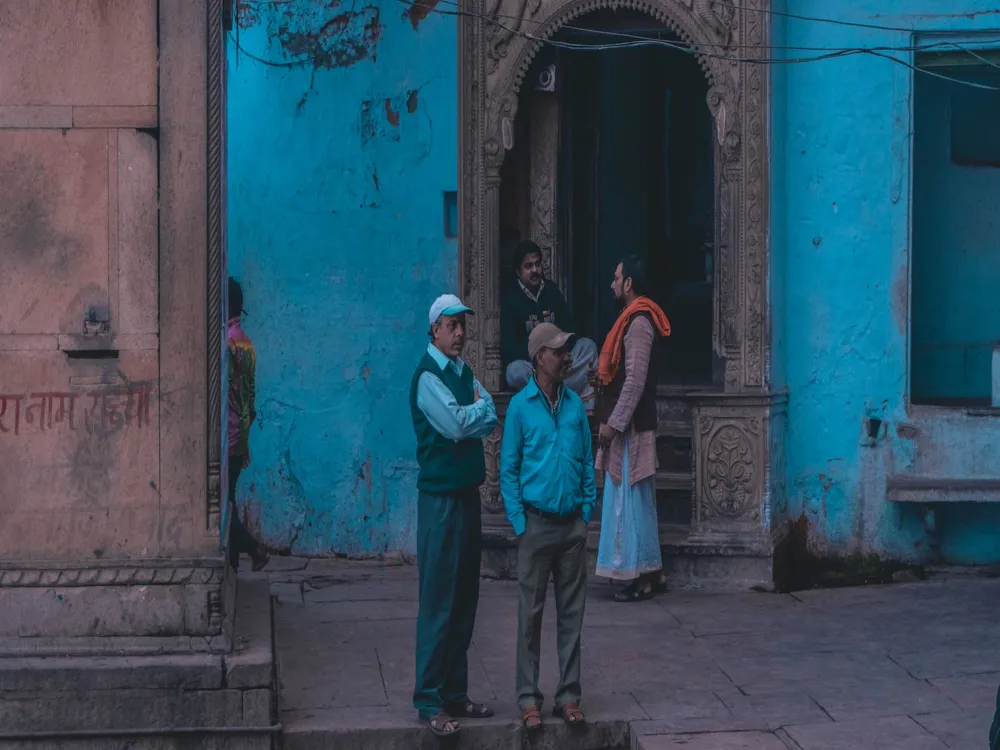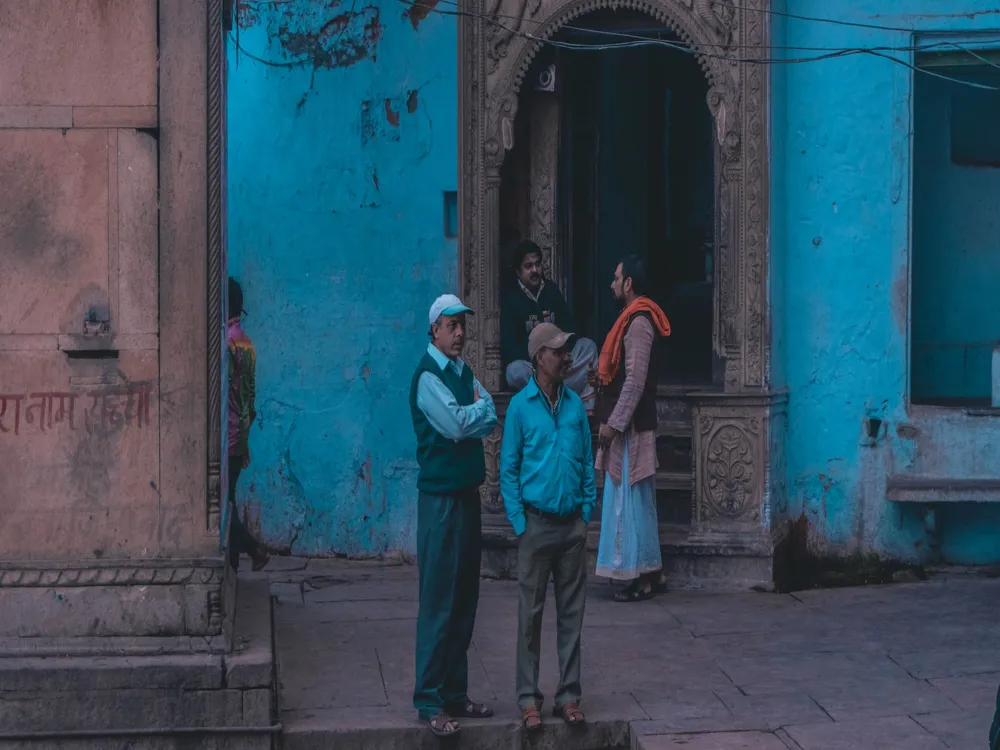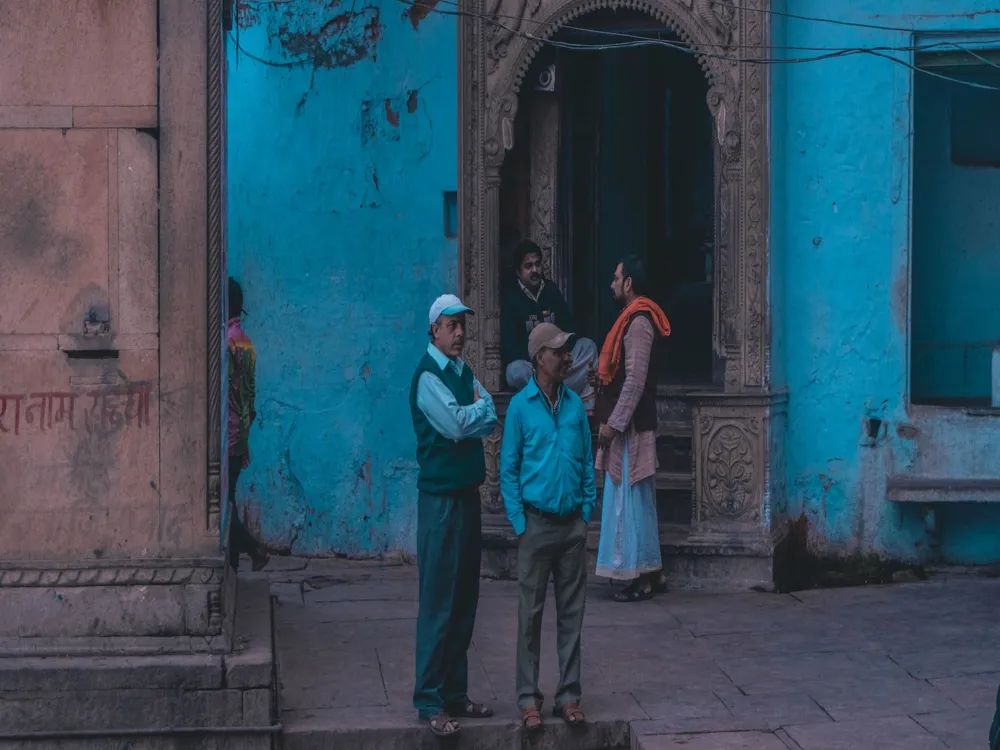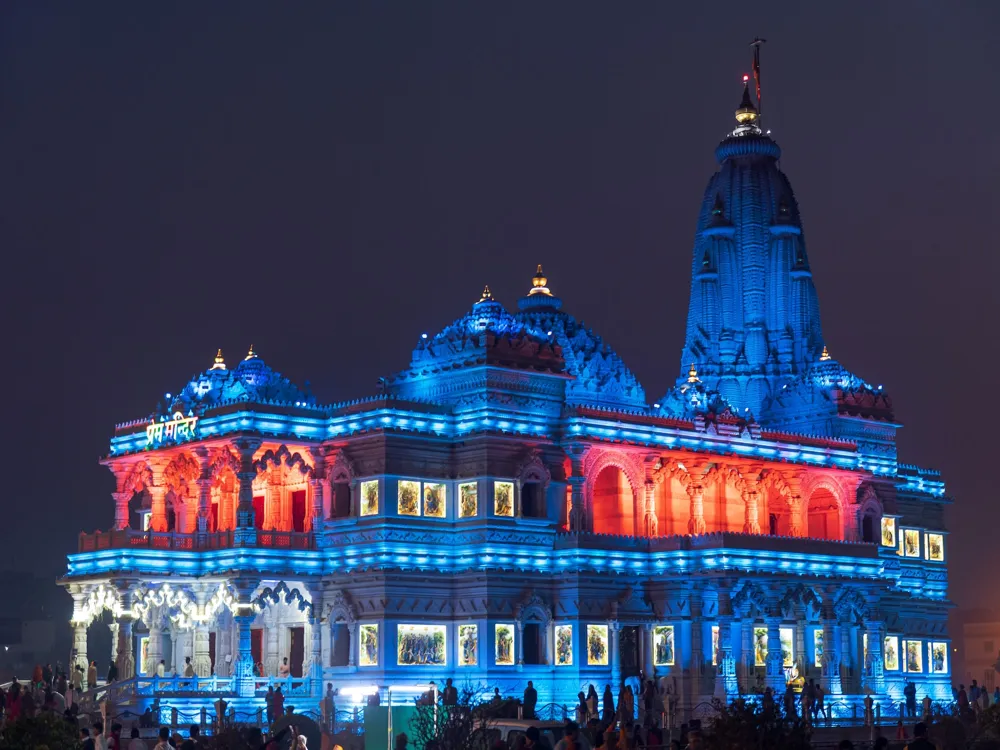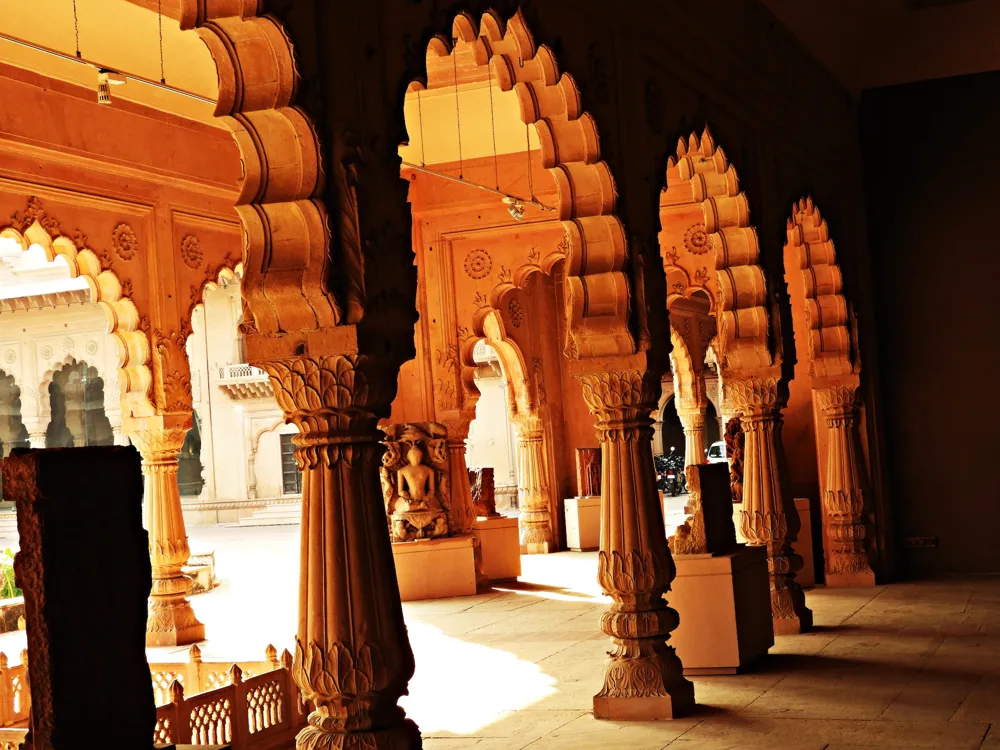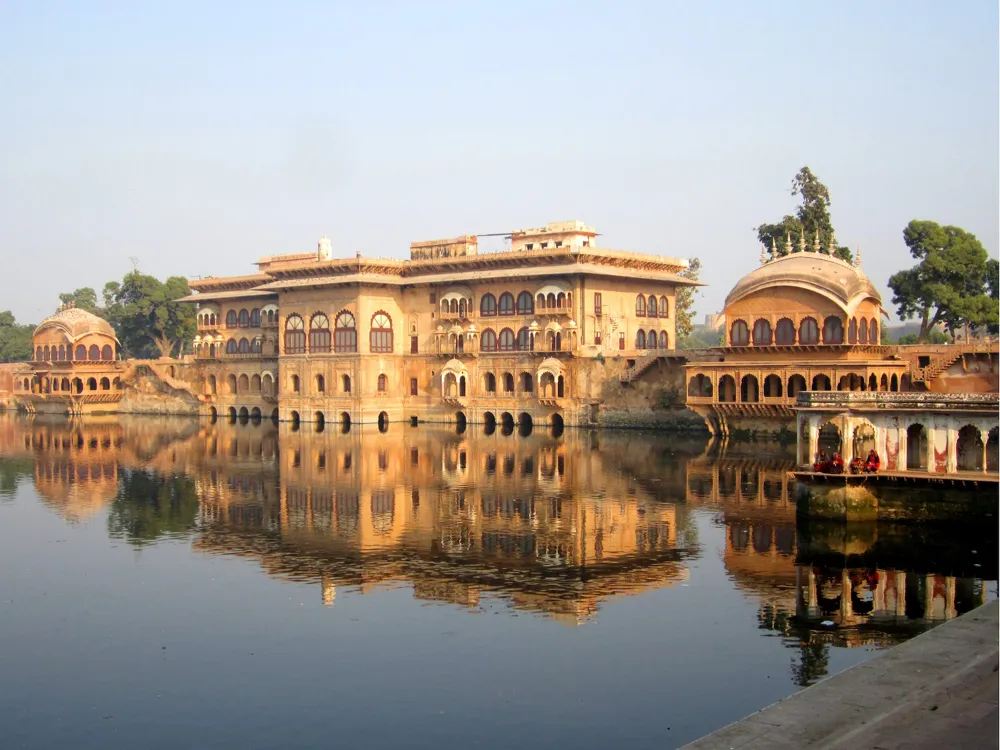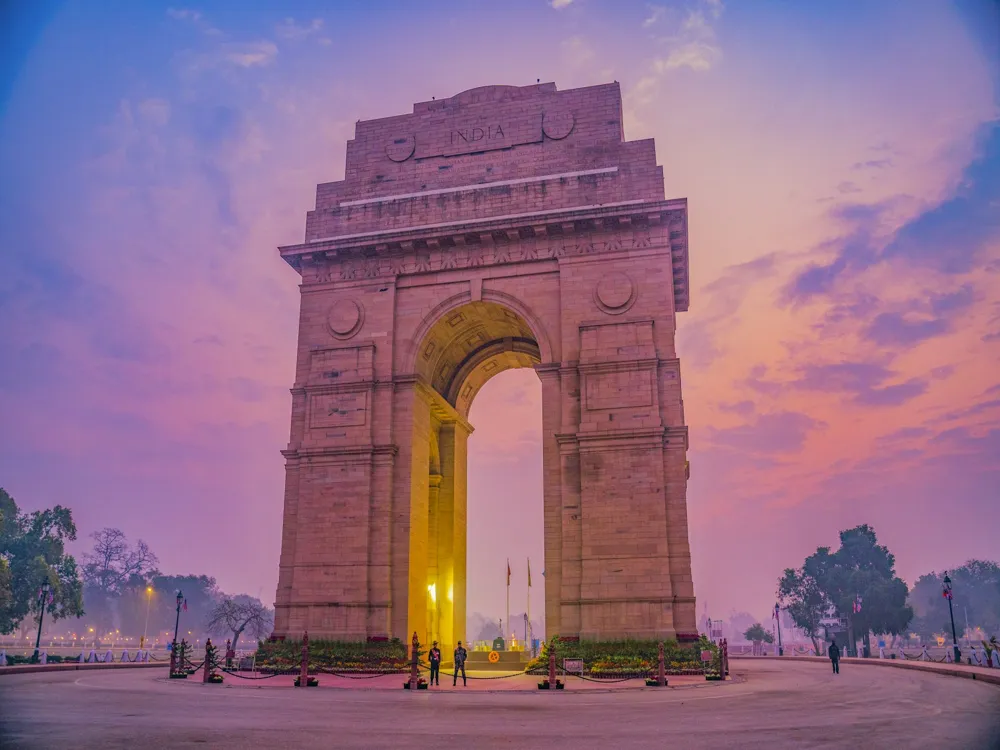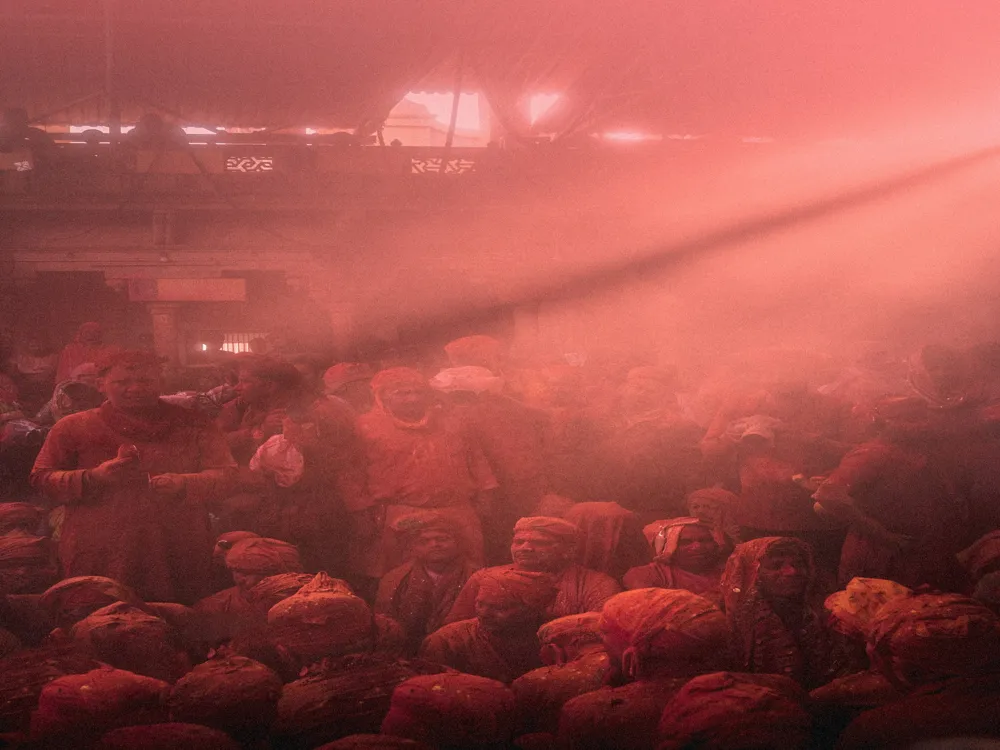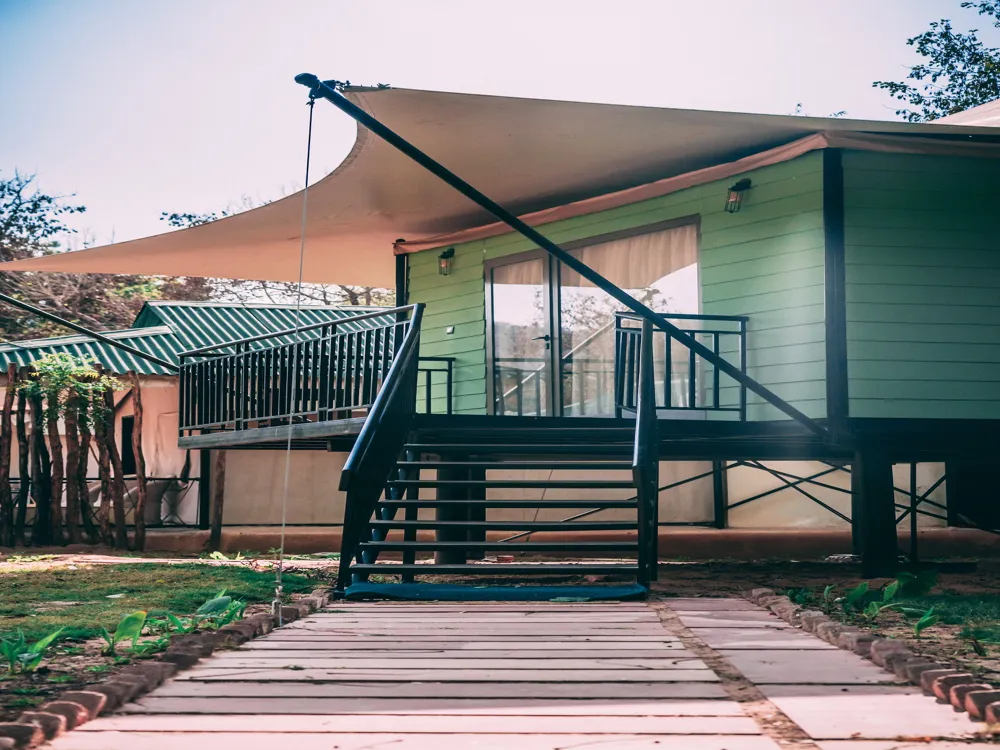Nestled in the heart of Mathura, Uttar Pradesh, the Dauji Mandir stands as a beacon of spiritual and cultural heritage. This temple, dedicated to Lord Balarama, also known as Dauji, is not just a religious site but a symbol of the rich history and mythology of India. The deity, Lord Balarama, is revered as the elder brother of Lord Krishna, a central figure in Hindu mythology. The temple's significance is deeply rooted in the Bhagavata Purana and other ancient texts, making it a site of immense religious importance for devotees and scholars alike. The history of Dauji Mandir dates back centuries, intertwining with the tales of the Yadava dynasty and the childhood of Lord Krishna and Balarama. The temple is a living narrative of the divine playfulness and valor of these deities, echoing the spiritual teachings and cultural values of Hinduism. Every corner of this sacred place resonates with stories and legends, making it a treasure trove for those seeking spiritual and historical enlightenment. The beauty of Dauji Mandir extends beyond its spiritual essence. The temple is a hub for cultural activities, especially during festivals like Holi, Janmashtami, and Diwali, when it is adorned with lights and colors, and the air is filled with devotion and celebration. Pilgrims from across the globe visit Dauji Mandir to immerse themselves in its divine ambiance and partake in the vibrant cultural festivities. The architecture of Dauji Mandir is a splendid example of ancient Indian temple design, showcasing a blend of aesthetic beauty and spiritual symbolism. The temple, predominantly built in the traditional North Indian Nagara style, stands as a testament to the architectural prowess of the era. The structure is characterized by its towering shikhara (spire), which is intricately carved and embellished, symbolizing the ascent to the divine realm. The main sanctum of the temple, housing the deity of Lord Balarama, is an artistic marvel. The sanctum is adorned with exquisite carvings, paintings, and sculptures that depict various episodes from the life of Lord Krishna and Balarama. The walls and ceilings are embellished with motifs and designs that reflect the rich tapestry of Hindu mythology and philosophy. One of the unique aspects of Dauji Mandir's architecture is its harmonious blend of various art forms. The temple not only showcases sculptural art but also integrates painting, metalwork, and woodcarving, each adding a layer of depth and meaning to the overall design. The intricate jaali work (latticed screen) and the ornately carved pillars are particularly noteworthy, exemplifying the skilled craftsmanship of the artisans. The temple complex also includes various ancillary structures such as smaller shrines, a pond, and community halls, all designed in harmony with the main temple. These structures serve as places for ritual, meditation, and community gatherings, reinforcing the temple's role as a center for spiritual and social activities. The layout of Dauji Mandir is also significant from a spiritual perspective. The temple is designed in accordance with Vastu Shastra and Agama Shastra, ancient Indian texts that dictate the principles of temple construction. This alignment with cosmic and natural energies is believed to enhance the spiritual experience of the devotees and create an ambiance of peace and divinity. Visitors are advised to dress modestly, in alignment with the temple's sacred nature. Traditional Indian attire is recommended. It is also important to maintain a respectful demeanor throughout the visit, keeping in mind the religious significance of the site. The ideal time to visit Dauji Mandir is during the cooler months from October to March. The temple is particularly vibrant during festivals like Holi and Janmashtami, offering a unique cultural experience. Photography may be restricted in certain areas of the temple. Visitors should look for signage indicating photography rules or inquire with temple authorities for guidance. The temple complex offers basic facilities like restrooms and drinking water. Visitors can also find small shops selling religious artifacts and souvenirs around the temple premises. Dauji Mandir is well-connected and easily accessible. The nearest major city is Delhi, from where one can travel by road or rail to Mathura. The temple is located at a short distance from Mathura city center and can be reached via local transport such as taxis, auto-rickshaws, or buses. For international visitors, the nearest airport is in Delhi, followed by a journey to Mathura by train or road. Read More:Overview of Dauji Mandir, Mathura, Uttar Pradesh
Architecture of Dauji Mandir
Tips When Visiting Dauji Mandir
Dress Code and Conduct
Best Time to Visit
Photography Rules
Facilities and Services
How To Reach Dauji Mandir
Dauji Mandir
Mathura
Uttar Pradesh
₹ 8,999 onwards
View mathura Packages
Weather :
Tags : Temple
Timings : 7:00 AM - 12:30 PM
3:00 PM - 4:00 PM
6:00 PM - 9:00 PM
Time Required : 1-2 hrs
Entry Fee : No entry fee
Planning a Trip? Ask Your Question
Mathura Travel Packages
View All Packages For Mathura
Top Hotel Collections for Mathura

Private Pool

Luxury Hotels

5-Star Hotels

Pet Friendly
Top Hotels Near Mathura
Other Top Ranking Places In Mathura
View All Places To Visit In mathura
View mathura Packages
Weather :
Tags : Temple
Timings : 7:00 AM - 12:30 PM
3:00 PM - 4:00 PM
6:00 PM - 9:00 PM
Time Required : 1-2 hrs
Entry Fee : No entry fee
Planning a Trip? Ask Your Question
Mathura Travel Packages
View All Packages For Mathura
Top Hotel Collections for Mathura

Private Pool

Luxury Hotels

5-Star Hotels

Pet Friendly







